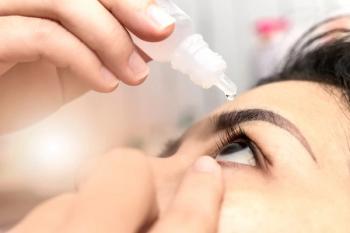
New study supports retention of myopia control in CooperVision's MiSight 1 day contact lenses
After treatment cessation, eye growth returned to age-expected levels and the accumulated myopia control treatment gains were retained over the following 12 months after treatment was ceased.
A new study published in Optometry and Vision Science supports the finding that myopia control gains with CooperVision’s MiSight 1 day dual-focus soft contact lenses are sustained after treatment, with eye growth aligning with that of untreated, age-matched populations.1 Results from the study indicated that there was no rebound effect with the contact lenses, according to a news release.
Additionally, after treatment cessation, eye growth returned to age-expected levels and the accumulated myopia control treatment gains were retained over the following 12 months after treatment was ceased.1
“Eye care professionals (ECPs) have embraced the importance of myopia control in children, and we are starting to see this reflected in prescribing behavior around the world,” said Paul Chamberlain, senior director of research programs at CooperVision and the study’s lead author, in the release. “To turn the tide on childhood myopia, ECPs must be confident in an intervention that not only slows progression but makes long-term treatment worthwhile. MiSight 1 day clearly demonstrates these benefits, allowing ECPs to prescribe with confidence for both immediate and lasting impact.”
The study evaluated participants who completed the 6-year MiSight 1 day clinical trial, including both the cohort who wore the lenses for all 6 years and the cohort who switched from single-vision to the MiSight lenses for the final 3 years, for an additional year following treatment cessation.1
The study included 83 participants, with 38 participants with 6 years of prior treatment (referred to as T6) and 40 receiving treatment during study years 4 to 6 (referred to as T3). Axial length and cyclopleged spherical equivalent refractive errors were also monitored annually for 7 years. The study that was conducted in years 1 to 3 (NCT01729208) was a multicenter, double-masked, controlled clinical trial which myopic children aged 8 to 12 years were randomly assigned to wear single-vision control lenses (Proclear 1 day; CooperVision) or MiSight lenses. Participants were then all assigned MiSight lenses in an open-label trial using the same clinical sites in Europe, Southeast Asia, and North America. After completing part 2 of the study, subjects from both cohorts were invited to participate in part 3, a bilateral, open-label trial in year 7 in which all eyes were refit into the Proclear lenses. Visits for part 3 commenced, on average, 2 weeks after the end of part 2. Follow-up visits were scheduled for the 6-month mark and the final visit, which was 1 year after the start of the washout period.2
During the untreated year 7, these annual axial growth and refractive changes were reported at 0.09 ± 0.09 (T3) and 0.10 ± 0.10 mm/y (T6), and −0.23 ± 0.36 (T3) and −0.21 ± 0.40 D/y (T6), respectively, with each slightly greater than observed during the previous year of treatment (0.07 ± 0.12 [T3] and 0.08 ± 0.07 mm [T6], and −0.04 ± 0.34 [T3] and −0.13 ± 0.42 D [T6]). Year 7 progression was less for the older (11 to 12 at baseline, −0.17 ± 0.40 D/0.05 ± 0.07 mm) than the younger (8 to 10 at baseline, −0.26 ± 0.36 D/0.13 ± 0.10 mm) subgroup. Years in treatment (3 vs 6) did not influence posttreatment growth or progression.2
“The conclusion that post-treatment eye growth and myopia progression was unaffected by the 3 or 6 years of prior treatment centers on the extrapolation of measured untreated growth from the initial control cohort using average growth and progression rates observed in untreated myopic eyes,” the study authors stated. “Conclusions would be better supported if the control group had been retained for 7 years. However, because of the success revealed after the first 3 years of the MiSight 1 day clinical trial, it was considered to be unethical and impractical to retain the control group for additional years of the study.”
References:
Retention of myopia control with MiSight 1 day contact lenses post treatment supported by peer-reviewed journal. News release. CooperVision. May 5, 2025. Accessed May 5, 2025. https://coopervision.com/practitioner/ecp-viewpoints/eyes-coopervision/retention-myopia-control-misight-1-day-contact-lenses#:~:text=The%20results%20indicated%20that%20there,12%20months%20after%20treatment%20ceased.
Chamberlain P, Hammond D, Bradley A, et al. Eye growth and myopia progression following cessation of myopia control therapy with a dual-focus soft contact lens. Optom and Vis Sci. Published online March 25, 2025. doi:10.1097/OPX.0000000000002244
Newsletter
Want more insights like this? Subscribe to Optometry Times and get clinical pearls and practice tips delivered straight to your inbox.
















































.png)


